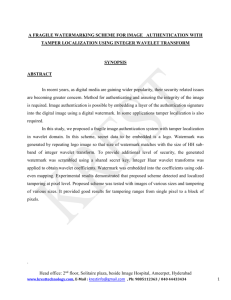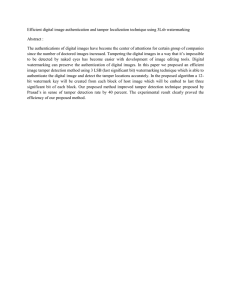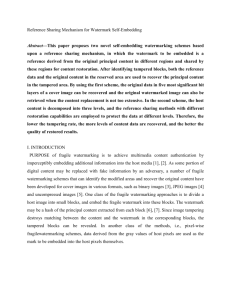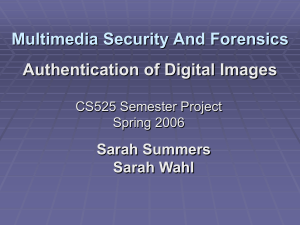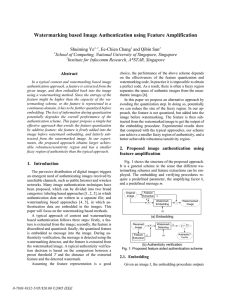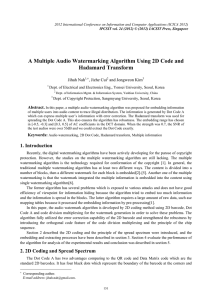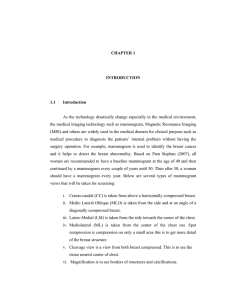Abstract
advertisement
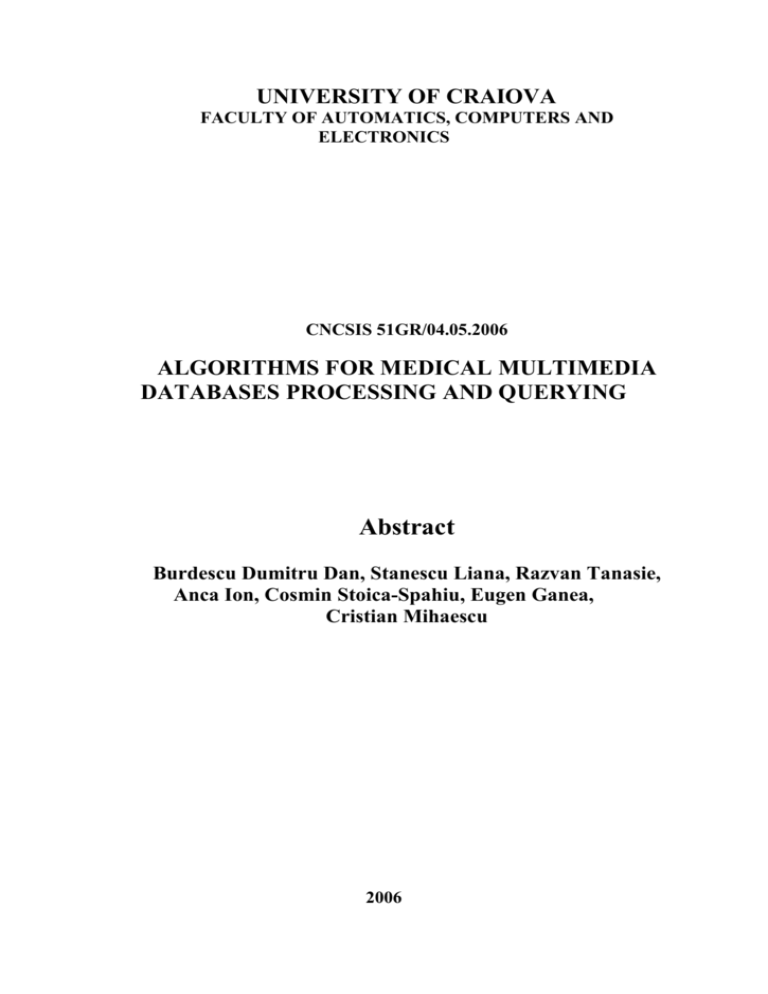
UNIVERSITY OF CRAIOVA FACULTY OF AUTOMATICS, COMPUTERS AND ELECTRONICS CNCSIS 51GR/04.05.2006 ALGORITHMS FOR MEDICAL MULTIMEDIA DATABASES PROCESSING AND QUERYING Abstract Burdescu Dumitru Dan, Stanescu Liana, Razvan Tanasie, Anca Ion, Cosmin Stoica-Spahiu, Eugen Ganea, Cristian Mihaescu 2006 Abstract The report presents a comparative study on some content-based visual query methods considering the color and texture characteristics applied to medical images. The implemented functions for the software system are simple text based querying, and color and texture-based query of a database populated by the information and images extracted from the DICOM files. The query is at the level of the entire image or at the level of the regions The software tool has a modularized architecture with the following modules: the extraction of the alphanumeric information and monochromatic or color images from the DICOM files; the visualization of this information and images from the database by means of a tool that disposes of some processing functions; the flexible simple text-based query on any information of the database; the content-based query on texture features which are extracted using different methods (co-occurrence and auto-correlation matrices, Gabor filters). The system correlates a database with a DICOM viewer and a search engine, being useful for the electronic registration of the patients, but also in the medical research and education. The module for extracting the images, alphanumeric information, the module for extracting image visual characteristics (color and color texture) and the color regions are on the server side. They are implemented using Java technology. The MySQL server is used for database. The client interface which allows the execution of simple text based query and content-based visual query on color and color texture features is implemented using the JSP and Servlet technologies. The image color information is represented by means of color histograms resulting from the transformation of the RGB color space to HSV color space and the quantification to 166 colors. In order to represent the color texture two methods that are considered efficient have been applied namely the co-occurrence matrices and Gabor filters. To compute the dissimilitude between the images, the histogram intersection has been used for the color and the Euclidian distance for the color texture. The experiments have shown that in the case of the medical images which are complex from the point of view of their significance, none of the studied methods have given good results separately, but their combination may lead to a better quality of the content-based visual query on this type of images. The experiments have envisaged both the retrieval quality and the complexity of each of the analyzed methods. Watermarking - an algorithm for authentication of digital images The rapid growth of digital multimedia technologies brings tremendous attention to the field of digital authentication. The owner or the distributor of the digital images can insert a unique watermark into copies for different customers or receivers, which will be helpful to identify the source of illegal copies. In digital watermarking, robustness is still a challenging problem if different sets of attacks need to be tolerated simultaneously. Software watermarking is the process of embedding a key into a program so that: (a) the key can be reliably retrieved after the program has been subjected to program transformations, (b) the embedding is imperceptible to an adversary and (c) the embedding does not degrade the performance of the program We present an original spatial authentication technique for digital images. Our approach modifies blocks of the image by insertion of a spatial watermark. A spatial mask of suitable size is used to hide data with less visual impairments. The watermark insertion process exploits average color of the homogeneity regions of the cover image. The complexity of the algorithms is proved to be O(n2), where ‘n’ is the nodes number of virtual graph for watermark. The authentication method developed works for all types of digital image. There are a lot of transformation that can be done on images: rotation, redimension, compression (transforming the image to JPEG), cropping and of course the case in which the image is not changed. Because it is not known what transformation the user did, all these transformations are verified one – by – one and the percentage of similitude between the original image and the verified one is returned. In the case of image rotation (angle of 90, 180 and arbitrary), are verified all the image nodes because the nodes’ position is changed. We search the nodes for which all of the three color channels have the values like the color’s channels of the bottom pixel minus one (or a certain constant). Before verifying these nodes, the image is dimensioned again to the initial dimensions at which the image is marked. By experiments, there resulted that in the case of rotation by 90 and 180 degree, the constant is zero, but in the case of rotation by arbitrary angle the constant is very great (100). In case of transforming to JPG, the implemented authentication algorithm entirely detects the image, only if the image is compressed with a quality of 100% and 80%. Even if the existence of the hidden information is known, it is difficult for an attacker to destroy the embedded watermark, even if the algorithmic principle of watermarking method is public. In cryptography, this is known as Kerkhoffs law: - a cryptosystem should be secure, even if an attacker knows the cryptographic principles and methods used but does not have the appropriate key The method developed above satisfies the necessary requests for the authentication technique and the series of presented transformations accounts resists to possible attacks. The method is easy to implement and the experimentally determined robustness shows that it can be used without fear of being detected or changed. In addition, the authentication method can be easily used for marking of medical digital images with other information besides those for watermarking.
